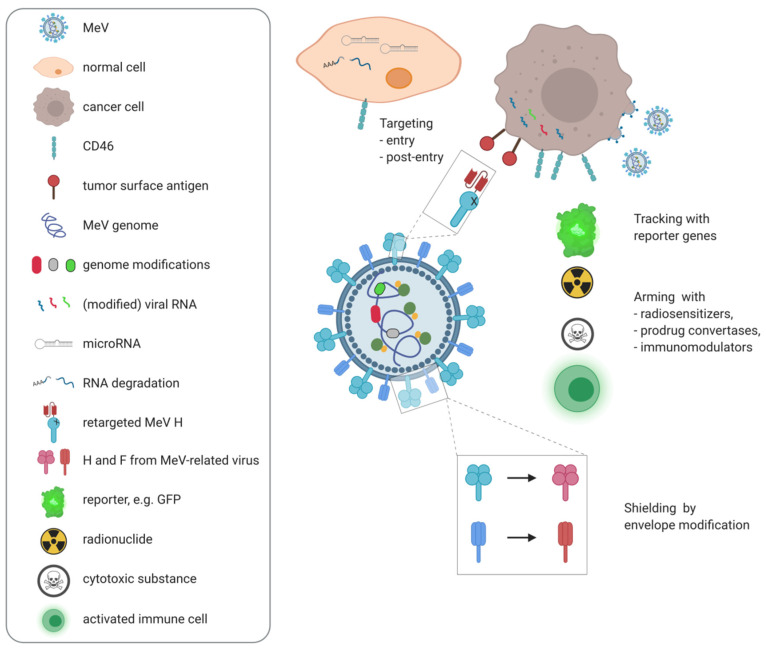Figure 3.
Engineering of oncolytic measles virus. Top: Targeting for increased tumor specificity can be achieved on the entry or post-entry level. For entry targeting, the viral attachment protein H can be mutated to ablate natural tropism and redirected by fusing targeting moieties such as antibody single-chain variable fragments to H (red). Post-entry targeting is achieved via target sites for microRNAs (gray) introduced into viral genes which are differentially expressed in malignant compared to healthy tissues, leading to degradation of the respective viral RNAs in normal cells. Middle: Viruses equipped with reporter genes encoding, e.g., fluorescent proteins (light green) can be used to track viral spread. To increase therapeutic efficacy, viruses can be armed with additional genes encoding radiosensitizers, prodrug convertases, or immunomodulators. Bottom: Shielding against neutralizing antibodies can be achieved by exchanging the viral envelope proteins for the counterparts from a related virus.

